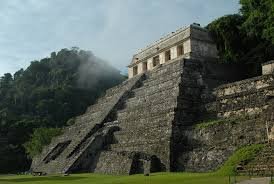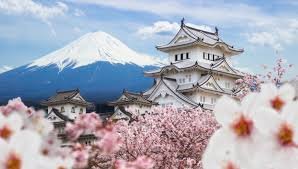
mexico landmarks
Mexico is a country defined by its remarkable blend of ancient civilizations, colonial heritage, and natural wonders. Across its diverse landscapes, travelers can encounter awe-inspiring archaeological sites, cathedrals, monuments, and geological marvels that tell the story of Mexico’s past and present. Each landmark embodies a piece of the nation’s identity, reflecting the achievements of indigenous peoples, the influence of Spanish colonization, and the resilience of modern Mexico. Exploring these sites offers visitors a deep connection to history, culture, and the natural world.
Chichén Itzá: A Wonder of the World
Perhaps the most famous of all Mexican landmarks, Chichén Itzá is a UNESCO World Heritage Site and one of the New Seven Wonders of the World. Located in the Yucatán Peninsula, this Mayan city flourished between the 9th and 12th centuries. Its most iconic structure is El Castillo, the pyramid of Kukulcán, which was ingeniously designed to align with the sun during the equinox. Twice a year, the shadow of a serpent appears to slither down the steps, symbolizing the feathered serpent deity. Beyond El Castillo, visitors can explore the Temple of the Warriors, the Great Ball Court, and the Sacred Cenote, each revealing insights into Mayan religion, sport, and daily life.
Teotihuacán: City of the Gods
Just outside Mexico City lies Teotihuacán, another monumental archaeological site. Known as the “City of the Gods,” Teotihuacán reached its peak between the 1st and 7th centuries AD and was one of the largest cities in the ancient world. Its central avenue, the Avenue of the Dead, leads to towering structures such as the Pyramid of the Sun and the Pyramid of the Moon. The site’s scale and sophistication demonstrate the architectural prowess of its builders, whose identity remains partly mysterious. Today, Teotihuacán is one of Mexico’s most visited landmarks, attracting millions who come to walk its vast plazas and climb its pyramids.
The Metropolitan Cathedral and Zócalo
In the heart of Mexico City, the Metropolitan Cathedral stands as a symbol of Spanish colonial influence. Constructed over nearly 250 years beginning in the 16th century, the cathedral blends Renaissance, Baroque, and Neoclassical styles. It towers over the Zócalo, the city’s central square, which itself is one of the largest urban plazas in the world. Together, the Zócalo and Cathedral represent the blending of indigenous and colonial histories, as the cathedral was built on the ruins of the Aztec capital Tenochtitlán. This area remains the political, cultural, and spiritual heart of the country, hosting national events and celebrations throughout the year.
Palenque: The Jungle City
Deep in the jungles of Chiapas, the ruins of Palenque offer a more intimate but equally impressive glimpse into Mayan civilization. Unlike the towering pyramids of Chichén Itzá, Palenque is renowned for its detailed stone carvings and architectural elegance. The Temple of the Inscriptions, which houses the tomb of King Pakal, stands as a masterpiece of Mayan engineering and artistry. Surrounded by lush rainforest, Palenque provides a sense of mystery and wonder, as howler monkeys and tropical birds echo through the ancient structures. For travelers seeking both cultural immersion and natural beauty, Palenque is a landmark that combines history with wilderness.
El Arco de Cabo San Lucas
On the southern tip of the Baja California Peninsula lies El Arco, a striking natural rock formation that rises dramatically where the Pacific Ocean meets the Sea of Cortez. This iconic arch, sculpted by wind and waves over centuries, is one of the most photographed landmarks in Mexico. Accessible by boat, El Arco is also a habitat for sea lions and a scenic backdrop for sunsets. The surrounding waters provide opportunities for snorkeling, diving, and whale watching, making it a destination where natural beauty meets marine adventure.
Monte Albán: Zapotec Legacy
Near the city of Oaxaca, the ancient city of Monte Albán sits atop a mountain ridge, offering sweeping views of the valley below. As the capital of the Zapotec civilization for over a thousand years, Monte Albán features plazas, pyramids, tombs, and ball courts. Its strategic location reflects the Zapotecs’ ingenuity in urban planning and defense. Today, visitors can walk among the ruins, admiring intricate carvings known as “Danzantes” that depict early forms of writing and ritual imagery. Monte Albán remains one of Mexico’s most important archaeological landmarks, symbolizing the legacy of indigenous civilizations that shaped the region long before European arrival.
The Angel of Independence
Modern Mexico also boasts symbolic landmarks, such as the Angel of Independence in Mexico City. Built in 1910 to commemorate the centennial of Mexico’s independence from Spain, the monument features a golden angel holding a laurel crown and a broken chain, symbolizing victory and freedom. Located on the Paseo de la Reforma, the Angel has become a rallying point for national celebrations, protests, and public gatherings. It reflects Mexico’s enduring spirit and the importance of independence in the nation’s identity.
Copper Canyon: A Natural Marvel
In northern Mexico’s Chihuahua state, the Copper Canyon (Barranca del Cobre) rivals the Grand Canyon in size and beauty. This network of canyons, carved by rivers, covers an area four times larger than its American counterpart. The region is home to the Tarahumara people, renowned for their long-distance running abilities and traditional way of life. Travelers can explore Copper Canyon by hiking, horseback riding, or taking the famous Chepe train, which winds through breathtaking landscapes. This landmark showcases Mexico’s natural grandeur and the resilience of indigenous cultures living within its rugged terrain.
Uxmal and the Puuc Route
Another jewel of the Yucatán is Uxmal, a UNESCO World Heritage Site known for its distinctive Puuc architectural style. The Pyramid of the Magician, with its rounded sides and steep incline, is one of the most unusual structures in Mesoamerica. The Nunnery Quadrangle and the Governor’s Palace further demonstrate the artistry and cosmological knowledge of the Mayans. Uxmal is often less crowded than Chichén Itzá, offering a more tranquil experience for visitors eager to connect with history. Exploring Uxmal along with nearby Puuc Route sites gives travelers a broader understanding of Mayan civilization in the region.
Cultural and Natural Diversity of Landmarks
Mexico’s landmarks are not confined to a single era or type; they span millennia and encompass both human achievements and natural wonders. From the pyramids of ancient civilizations to colonial cathedrals and modern monuments, each site tells part of Mexico’s ongoing story. Natural landmarks such as volcanoes, cenotes, and coastal formations further enrich the country’s diversity. This combination of cultural heritage and natural beauty is what makes Mexico such a remarkable destination for travelers worldwide. For detailed travel information on Mexico’s heritage, readers may consult this guide.
Planning a Landmark-Focused Journey
When planning a journey through Mexico’s landmarks, travelers should consider regional diversity and accessibility. Sites in the Yucatán, such as Chichén Itzá and Uxmal, can be combined with beach stays, while central Mexico offers a mix of colonial architecture and pre-Hispanic ruins. Northern regions provide opportunities for adventure in natural settings like Copper Canyon, while southern areas such as Chiapas offer archaeological depth and ecological richness. Practical planning ensures a rewarding experience, balancing famous attractions with lesser-known gems. For broader travel advice, this resource is helpful.
Conclusion
The landmarks of Mexico embody the essence of a nation that bridges the ancient and modern, the cultural and natural. From the pyramids of Chichén Itzá and Teotihuacán to the colonial splendor of the Metropolitan Cathedral and the natural wonder of El Arco, these sites capture the diversity and richness of Mexican heritage. Each landmark not only offers visual splendor but also invites travelers to engage with stories of resilience, creativity, and transformation. By exploring these icons, visitors gain a deeper understanding of Mexico’s past and present, while experiencing the warmth and vibrancy that define the nation.






